
14 crossword puzzles related to 7th grade science.
- Subject:
- Life Science
- Physical Science
- Material Type:
- Homework/Assignment
- Author:
- Share My Lesson Science Team
- Date Added:
- 06/11/2021

14 crossword puzzles related to 7th grade science.

Tony Sarg was a puppeteer and marionette master who invented the first, larger than life, helium balloons for the annual Macy’s Thanksgiving Day Parade. The resource includes a lesson plan/book card, a design challenge, and copy of a design thinking journal that provide guidance on using the book to inspire students' curiosity for design thinking. Maker Challenges include: (1) Dash/Sphero: Develop a Macy’s Day Parade route using tape on the ground with a partner. Then, switch routes with another group and program the robot of your choice to navigate the parade route using code. (2) Ozobot: Develop a synchronized dance routine for both Ozobots for the stage of the Macy’s day parade using https://ozoblockly.com/editor (3) Create a moveable puppet that will be featured in the Macy’s Day Parade.
A document is included in the resources folder that lists the complete standards-alignment for this book activity.
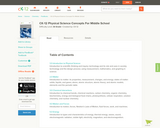
CK-12 Physical Science Concepts covers the study of physical science for middle school students. The 5 chapters provide an introduction to physical science, matter, states of matter, chemical interactions and bonds, chemical reactions, motion and forces, and the types and characteristics of energy.
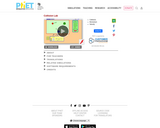
Investigate collisions on an air hockey table. Set up your own experiments: vary the number of discs, masses and initial conditions. Is momentum conserved? Is kinetic energy conserved? Vary the elasticity and see what happens.
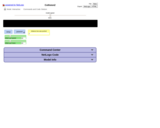
A simulation to model Newton's Laws through the collision of a cart and a box.
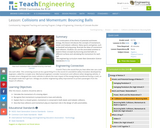
As a continuation of the theme of potential and kinetic energy, this lesson introduces the concepts of momentum, elastic and inelastic collisions. Many sports and games, such as baseball and ping-pong, illustrate the ideas of momentum and collisions. Students explore these concepts by bouncing assorted balls on different surfaces and calculating the momentum for each ball.
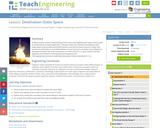
Students acquire a basic understanding of the science and engineering of space travel as well as a brief history of space exploration. They learn about the scientists and engineers who made space travel possible and briefly examine some famous space missions. Finally, they learn the basics of rocket science (Newton's third law of motion), the main components of rockets and the U.S. space shuttle, and how engineers are involved in creating and launching spacecraft.

Forces arrow practice worksheet. Put the board truck on the whiteboard and get the kids to come up and draw on their answers around it. Answers are provided on a separate document.
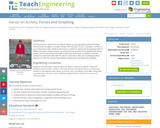
Use this activity to explore forces acting on objects, practice graphing experimental data, and introduce the algebra concepts of slope and intercept of a line. A wooden 2 x 4 beam is set on top of two scales. Students learn how to conduct an experiment by applying loads at different locations along the beam, recording the exact position of the applied load and the reaction forces measured by the scales at each end of the beam. In addition, students analyze the experiment data with the use of a chart and a table, and model/graph linear equations to describe relationships between independent and dependent variables.

A PowerPoint that includes 6 lessons to work on Forces and their effects.The PowerPoint is clearly cut into several lessons; with objectives; definitions; activities and directions for practicals.The handout that goes with one of the lesson is available.

After the Great Depression struck, Ford especially wanted to support ailing farmers. For two years, Ford and his team researched ways to use farmers’ crops in his Ford Motor Company. They discovered that the soybean was the perfect answer. Soon, Ford’s cars contained many soybean plastic parts, and Ford incorporated soybeans into every part of his life. He ate soybeans, he wore clothes made of soybean fabric, and he wanted to drive soybeans, too. The resource includes a lesson plan/book card, a design challenge, and copy of a design thinking journal that provide guidance on using the book to inspire students' curiosity for design thinking. Maker Challenge: Think about the people in your community and the challenges they face. List three challenges that affect their daily life. Consider something you use every day and brainstorm how it could be repurposed or modified to address this problem.
A document is included in the resources folder that lists the complete standards-alignment for this book activity.

This is the story of how Les Paul created the world's first solid-body electric guitar, countless other inventions that changed modern music, and one truly epic career in rock and roll. How to make a microphone? A broomstick, a cinderblock, a telephone, a radio. How to make an electric guitar? A record player's arm, a speaker, some tape. How to make a legendary inventor? A few tools, a lot of curiosity, and an endless faith in what is possible, this unforgettable biography will resonate with inventive readers young and old.

Meet savvy scientist and inventor Hedy Lamarr, also known for her career as a glamorous international movie star. Dubbed "The Most Beautiful Woman in the World," Hedy actually preferred spending time creating inventions in her workshop to strutting down the red carpet. Hedy co-invented the technology known as frequency hopping, which turned out to be one of the most important scientific breakthroughs of the twentieth century! Today's cell phone, computers, and other electronic devices would be more vulnerable to hacking without the groundbreaking system discovered by a world-famous actress and gifted inventor. The resource includes a lesson plan/book card, a design challenge, and copy of a design thinking journal that provide guidance on using the book to inspire students' curiosity for design thinking. Maker Challenge: Create small groups. Pass out one of the challenges listed in the lesson plan/book card to each group for them to come up with an invention that will solve the problem at hand.
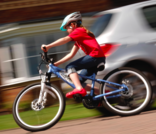
This lesson is intended for teach students the basics of motion: constant velocity. Students will gain an understanding of position, velocity, speed, distance, and displacement after completing this. This lesson took two hour long class periods for 10th grade introductory physics students to complete. The lesson would also be appropriate for upper middle school depending on the required standards.
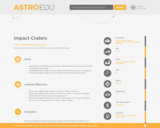
The students will learn about recent meteor strikes and the effects they can have. They will then examine their significance in the history of the planet, and what they do to the surface of a planet when forming a crater. The students will then experimentally determine how the size and impact velocity of a meteorite determine the size of the crater.

Richard grew up in Kenya as a Maasai boy, herding his family’s cattle, which represented their wealth and livelihood. Richard’s challenge was to protect their cattle from the lions who prowled the night just outside the barrier of acacia branches that surrounded the farm’s boma, or stockade. Though not well-educated, 12-year-old Richard loved tinkering with electronics. Using salvaged components, spending $10, he surrounded the boma with blinking lights, and the system works; it keeps lions away. His invention, Lion Lights, is now used in Africa, Asia, and South America to protect farm animals from predators. The resource includes a lesson plan/book card, a design challenge, and copy of a design thinking journal that provide guidance on using the book to inspire students' curiosity for design thinking. Maker Challenge: Your challenge is to use broken or old technology and other available resources to create a prototype that can be used to protect your home. This could involve tinkering, hacking, or redesigning the components of the technology to meet your needs.
A document is included in the resources folder that lists the complete standards-alignment for this book activity.
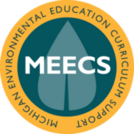
Students learn how energy consumption has changed over the past 100 years, why it has changed, and the impact it has had. Students brainstorm and categorize uses of energy, take part in an optional consumption simulation, interpret graphs about energy use, take surveys, and engage in small group and classroom discussions about energy comparisons.

Tells the story of how the Slinky, the most popular toy in American history, was invented. The resource includes a lesson plan/book card, a design challenge, and copy of a design thinking journal that provide guidance on using the book to inspire students' curiosity for design thinking. Maker Challenge: Develop a commercial about the Slinky.
A document is included in the resources folder that lists the complete standards-alignment for this book activity.
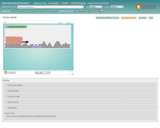
In this simulation, students are able to explore a microscopic model of friction.

A young girl has a wonderful idea to make the most MAGNIFICENT thing! But making her magnificent thing is anything but easy, and the girl repeatedly tries and fails. Eventually, she quits, but a walk with her dog and time to think, she comes back to her project with renewed enthusiasm and manages to get it just right. The resource includes a lesson plan/book card, a design challenge, and copy of a design thinking journal that provide guidance on using the book to inspire students' curiosity for design thinking. Maker Challenge: Create small groups. Pass out one of the challenges listed in the lesson plan/book card to each group for them to come up with an invention that will solve the problem at hand.
A document is included in the resources folder that lists the complete standards-alignment for this book activity.